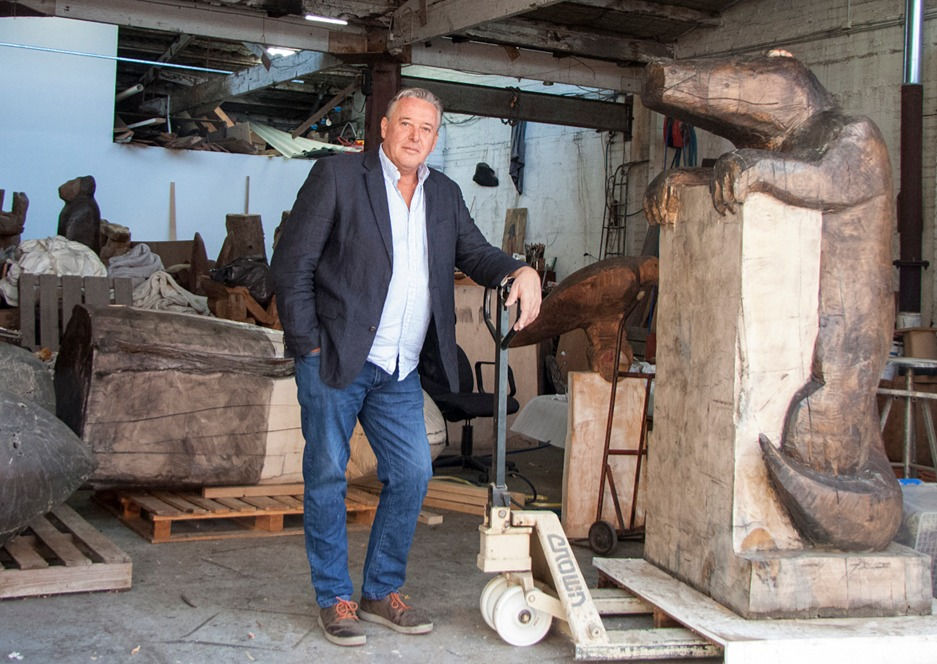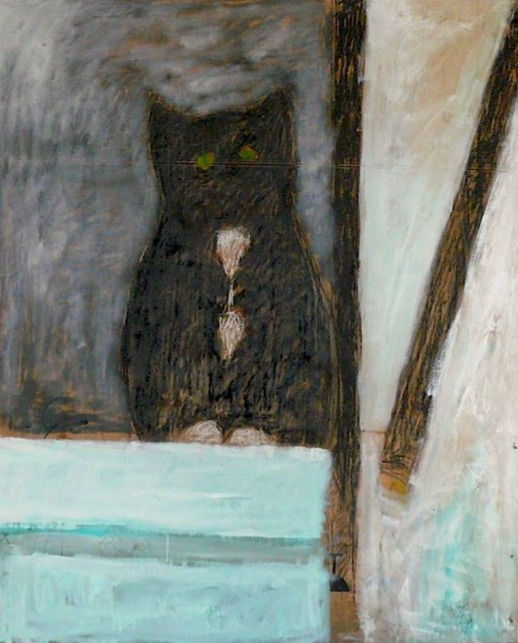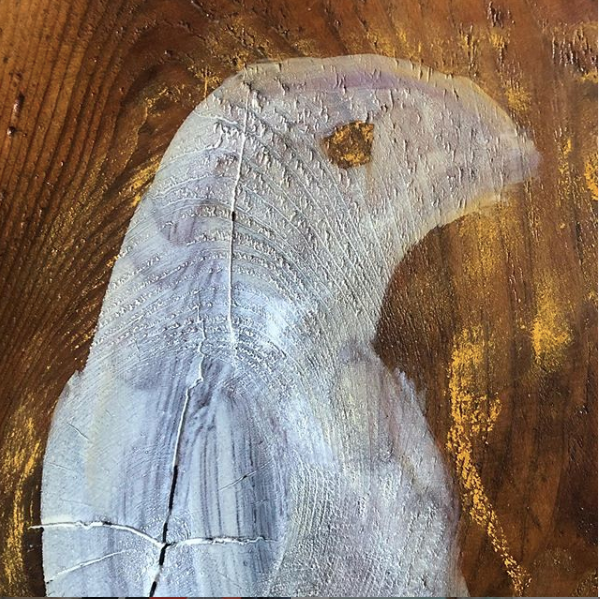'Put to good use': Sculptor Bruce Armstrong puts his back into painting
- Andrew McIlroy
- Apr 16, 2020
- 3 min read

Wild storms are a regularly feature of Melbourne’s notoriously unpredictable weather, felling many large trees, some of them over 200 years old, across the city, its roadsides, waterways and parks. The usual practice is to mulch the debris, feeding the deadwood through giant, gnawing machines – with at least one notable exception.
The morning after one particularly bad storm a few years back now, I stopped to talk with one of the Royal Botanic Gardens’ distinctly crumpled green uniformed gardeners that frequent my local coffee shop. The storm’s immense, damaging toll on the gardens nearby was plain to see. I was curious to know how they managed all those fallen often rare trees, once standing so proud one could not reach around their expansive trunks.
“Oh we’ve got an arrangement with a local guy, a sculptor. A big chap too which helps. He gets right in there pretty much after any big storm, takes his pick and carts off the wood for us”, he says with a satisfied grin. “It’s beautiful old timber so it’s good to see it put to good use.”

Melbourne's Royal Botanic Gardens after a blustery storm in 2017 Photo: RBG

Bruce Armstrong's Cremorne studio Photo: Bruce Armstrong
Australian artist Bruce Armstrong’s inner-suburb studio too is big. Of course it needs to be to house those often enormous, ageing rough-hewn timbers – quietly awaiting their fate.
And the wait is worth it. Armstrong’s strong, purposeful carving carries a high regard for the provenance of these trees, for their antiquity. His acclaimed signature sculptures, “strange beasts ... bears and birds and other denizens of the sculptor’s iconic deities are”, says art critic Ashley Crawford, “ poised and powerful.”
Their stately, stout features are instantly recognisable. Poignant, engaging, the sculptures bring to life – refashioning - the ancient history, mythology and indigenous stories of the region; once the home of these great natives. Is there a better form of up-cycling than this?

Bruce Armstrong, 'Guardians' (1987) Photo: National Gallery of Victoria

Bruce Armstrong, 'The Guardians' (2008) Photo: Hyatt Regency, Melbourne
As an artist, Armstrong has inordinate ability and range. His recent exhibition of paintings at Stephen McLaughlan Gallery in Melbourne’s iconic Nicholas Building reveal in Crawford’s words, “a creative fluency in his approach, from brutally chainsaw-hewn textures to delicate and intimate sketches”.
For me, these sketches are imbued with a sense of sacredness, of purity - opening up on the artist’s theme of attributing a living soul to plants and inanimate objects, by similarly attributing soul-filled, human characteristic to animals. There too is a delightful touch of whimsy. In this way, Armstrong’s work is instantly engaging, intimate and familiar, imbued with human experience – in all its wonderful variation.
Armstrong’s work is raw. Whether he is working in wood, stone, steel or paint. Interestingly his painting too is granular, with coarseness to its pigment as if the brush was first rolled in sawdust. It has then, for every good reason, a primitive, almost ageless or rather age-defying feel. But this is not a trite reference. Armstrong has long used paint across his textured, wood surfaces, adding a nuanced and delightfully spontaneous dimension to form.




A collection of Bruce Armstrong's exhibition paintings, Melbourne 2020 Photos: Bruce Armstrong
Armstrong’s shift it seems to painting of late is more than a necessity born of the physical toll of many years of hard labour and heavy lifting in his sculpture workshop. It brings a new way of viewing the totality of his life’s work - from his monolithic to smaller sculptures to his softly etched drawings and paintings of today.
We can remain hopeful that this latest offering of paintings is reflective of the acclaimed artist‘s desire to exhibit more widely into the future, focusing less perhaps on major all-consuming public sculpture commissions.
For each time one leaves the presence of Armstrong’s work one is no doubt left with an indelible impression of the man, his thought and his soul. And as the Royal Botanic Gardens’ hardworking gardeners can attest, being all the better for the experience.


From Bruce Armstrong's exhibition of new paintings at Stephen McLaughlan Gallery Photo: Bruce Armstrong

Installation shots of Bruce Armstrong's 2020 Melbourne exhibition Photo: Stephen McLaughlan Gallery
Main Photo: Bruce Armstrong in his Melbourne studio Photo: National Gallery of Victoria Andrew McIlroy is a visual artist and arts writer, living and working in Melbourne, Australia



Comments